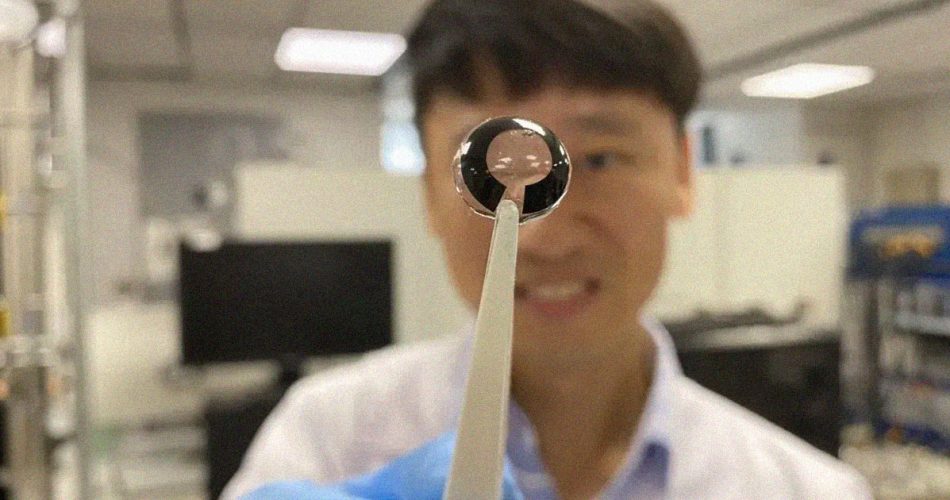

Researchers in Singapore Develop Micrometer-Thin Battery Powered by Tears for Smart Contact Lenses
A team of researchers in Singapore has made a groundbreaking discovery in the field of smart contact lenses. They have developed a tiny, micrometer-thin battery that can store energy from human tears to power these innovative lenses.
Smart contact lenses have the potential to revolutionize the way we interact with technology. With the ability to display turn-based directions, notifications, and other easily presentable data, they eliminate the need for bulkier smart glasses or external devices.
However, one major challenge in developing smart contact lenses has been finding a suitable power source. While display technology has become incredibly small, batteries have not kept up with the pace of miniaturization. This has led to the need for impractical wires connecting the lenses to external power sources.
Lead author Lee Seok Woo, an associate professor at Nanyang Technological University (NTU) in Singapore, explained the motivation behind their research: “This research began with a simple question: could contact lens batteries be recharged with our tears?” In a new paper published in the journal Nano Energy, Woo and his team detailed their findings.
A Safe and Environmentally Friendly Solution
The newly developed battery relies on glucose and water to generate electricity. These two substances are safe for humans and pose less harm to the environment when disposed of compared to conventional batteries. The battery is constructed using biocompatible materials and features a glucose-based coating that reacts with sodium and chloride ions found in tears to generate electricity and power a circuit.
In an experiment using a simulated eye, the battery produced a current of 45 microamperes and a maximum output of 201 microwatts. This is enough power to operate a smart contact lens, according to the researchers.
By combining the battery and biofuel cell into a single component, the team has found an elegant solution that eliminates the need for bulky wireless charging. Li Zongkang, a PhD student at NTU and coauthor of the study, explained, “Although wireless power transmission and supercapacitors supply high power, their integration presents a significant challenge due to the limited amount of space in the lens.”
While the technology is still in its early stages and has limitations (the battery can only be charged and discharged 200 times), the team is already collaborating with contact lens companies to bring this innovative technology to market.
Read More: Startup Shows Off Working AR Contact Lens You Can Actually Wear

